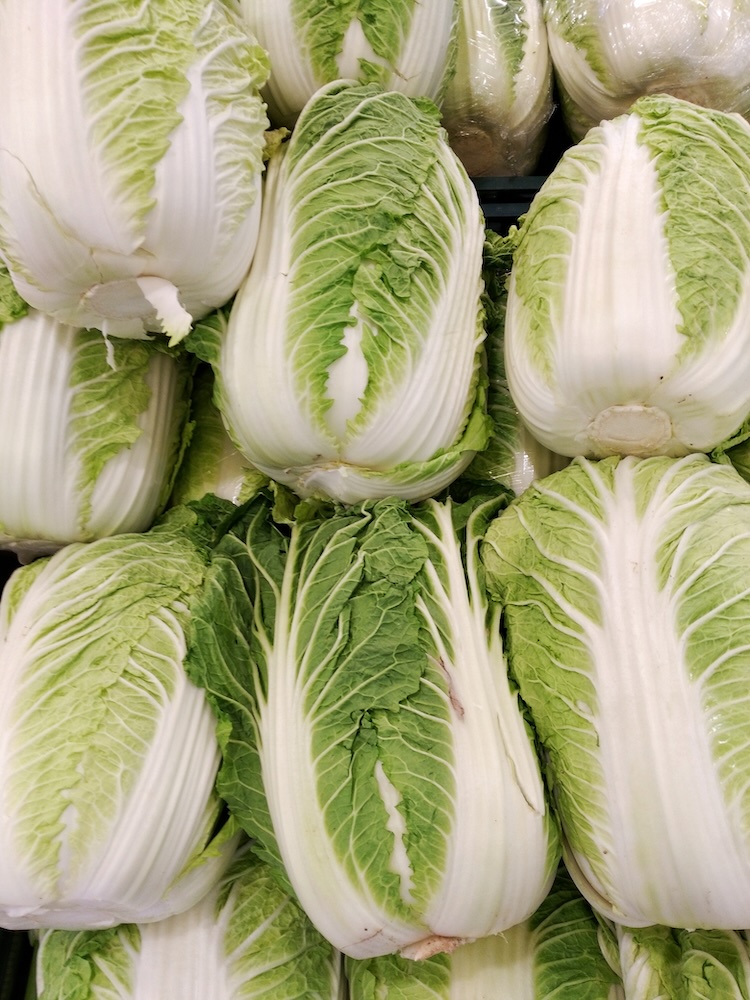Napa Cabbage
Napa cabbage is in season and – as cabbage goes – is one of the most flavorful, nutrient-dense varieties out there. Something Good Organics has the first available, and I grabbed some for myself and my clients. This cabbage, also called Chinese cabbage, is traditionally used in kimchi, but is also an incredible vehicle for lettuce wraps; or roasted, sauteed, rolled with filling, and so much more. In just one cup of Napa cabbage you can find vitamin B6, B9, riboflavin, pantothenic acid, and thiamin. Vitamin B6 is one of the few vitamins that our bodies cannot produce on its own, and one of the most important for a robust metabolism, helping to build red blood cells, reducing chronic disease, and strengthening our neurotransmitters. Vitamin B9 is excellent for our heart health, circulatory system, and the production of red blood cells. Napa cabbage is also a good source of vitamin K, which is essential for keeping our calcium levels healthy and maintaining strong bones. Vitamin C, an antioxidant known for its immunity boosting, is also great for aiding in iron absorption. Copper is also found in abundance in Napa cabbage and is super important for our brain health through its facilitating of nerve development. As you can see, this simple cabbage is packed full of healthy goodness. Let’s take it in the kitchen and make some kimchi which, with its gut-friendly properties, is a perfect accompaniment to serve this upcoming cold season.

Simple Napa Cabbage Kimchi
Yield: 8 Servings
2 pounds Napa cabbage
¼ cup iodine-free sea salt or kosher salt
Filtered water
6 garlic cloves, grated
1 teaspoon fresh gingerroot, peeled and grated
1 teaspoon cane sugar
2 tablespoons vegan fish sauce
4 tablespoons Gochugaru or Korean red pepper flakes (you can use less)
8 ounces daikon radish, peeled and cut into fine matchsticks
4 medium scallions, washed, trimmed and cut into 1-inch pieces
Directions:
1. Cut the Napa cabbage lengthwise through the stem and into quarters. Cut the cores out of each piece and then cut each quarter crosswise into 2-inch-wide strips. Add the cut cabbage to a large bowl.
2. Add the salt to the cabbage and using your hands, massage the salt into the cabbage until it starts to soften. Add enough water to cover the cabbage and then put a plate on top and weigh it down with something heavy on top (like a can of beans). Let stand at room temperature for 1 to 2 hours.
3. Rinse and drain the cabbage under cold water, at least 3 times. Transfer to a colander and allow to drain for 20 minutes.
4. While the cabbage drains, make the seasoning. In a large bowl, add the garlic, ginger, sugar, fish sauce, Korean red pepper. Stir until a paste forms.
5. Put on some gloves! Gently squeeze any additional water from the cabbage and add to the paste. Add in the daikon and scallions. Using your hands, gently massage the spice paste into the vegetables until coated.
6. Pack the kimchi into a 1-quart jar, pressing it down until all the liquid comes to the top. Seal and place in the refrigerator for 1 to 5 days. You may see bubbles appear inside the jar and that’s great! It’s fermenting! Enjoy!







You must be logged in to post a comment.